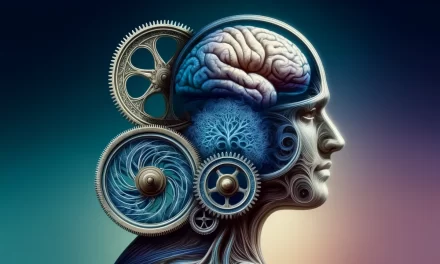Introduction
The NLP Guide to Mindfulness and Meditation
In today’s fast-paced world, finding inner peace and mental clarity is more important than ever. This is where the transformative power of Neuro-Linguistic Programming (NLP) comes into play, especially when combined with the practices of mindfulness and meditation. NLP, a psychological approach that involves analyzing strategies used by successful individuals and applying them to reach a personal goal, offers a unique pathway to mental wellness and self-improvement.
This blog post is designed as a comprehensive guide for those new to NLP, including students, teachers, professionals like doctors, therapists, coaches, counselors, businessmen, and even housewives. Each of you, in your diverse roles and responsibilities, can find value in the “NLP and meditation techniques” and “Mindfulness NLP strategies” discussed here. Whether you’re a coach looking to incorporate mindfulness into your practice, or a therapist seeking new ways to support your clients, this guide is tailored for you.
We will explore how “Neuro-linguistic programming for mindfulness” can enhance your daily life, offering practical “NLP mindfulness exercises” and insights into “Meditation and NLP benefits.” These techniques are not just theoretical concepts; they are tools that can be applied in real-life situations. For instance, imagine a teacher using NLP techniques to create a more focused and calm classroom environment, or a business professional employing mindfulness practices to make more considered decisions.
As we delve into the world of “Integrating NLP with meditation,” you’ll discover how these practices complement each other, creating a synergy that amplifies their individual benefits. This guide will also introduce “NLP techniques for stress relief,” an essential skill in our often high-pressure lives.
By the end of this post, you’ll have a personalized “Mindfulness meditation NLP guide” at your disposal, empowering you to navigate the challenges of modern life with greater ease and confidence. So, let’s embark on this journey together, exploring how NLP can unlock the door to a more mindful, peaceful, and productive life.
Understanding NLP and Its Principles
Unlocking the Potential of Neuro-Linguistic Programming
Neuro-Linguistic Programming (NLP) is a fascinating realm that blends language, neuroscience, and psychology to influence personal growth and communication. At its core, NLP is about understanding how we perceive the world and how we can change our thoughts and behaviors to achieve specific outcomes. It’s a powerful tool for anyone, especially those new to digital marketing and personal development.
The foundation of NLP lies in its belief that our language and thoughts shape our reality. This principle is particularly relevant for coaches and educators who use language as a primary tool in their work. For example, an NLP principle like ‘reframing’ can help a coach guide a client to view a challenging situation from a different perspective, thereby finding new solutions.
Another key aspect of NLP is its focus on successful patterns of behavior. It involves studying how successful individuals achieve their goals and applying these strategies to improve our own performance. This approach is incredibly beneficial for professionals, such as therapists and business leaders, who strive for continuous improvement and excellence in their fields.
NLP also emphasizes the power of visualization and positive thinking. By visualizing success and adopting a positive mindset, individuals can overcome barriers and achieve greater success. This technique is particularly useful for students and housewives who might be facing challenges in their personal and academic lives.
Moreover, NLP offers practical techniques for building rapport, enhancing communication, and influencing change in oneself and others. These skills are invaluable for professionals like doctors and counselors, who rely on strong interpersonal relationships to be effective in their roles.
In summary, NLP is not just a set of theories; it’s a practical toolkit for personal and professional development. Its principles can be applied across various aspects of life, making it a versatile approach for anyone looking to enhance their mental wellness, communication skills, and overall quality of life. As we delve deeper into the integration of NLP with mindfulness and meditation, we’ll discover how these principles can be applied to create a more balanced, focused, and fulfilling life.
The Connection Between NLP and Mindfulness
Bridging Mindfulness and Neuro-Linguistic Programming
The synergy between Neuro-Linguistic Programming (NLP) and mindfulness is a powerful one, offering profound benefits for mental clarity and emotional balance. While NLP focuses on the language of the mind, mindfulness centers on the art of being present. Together, they create a holistic approach to mental wellness, particularly beneficial for those new to these practices, including coaches and digital marketing professionals.
Mindfulness, at its essence, is the practice of being fully present and engaged in the moment, without judgment. It’s about observing our thoughts and feelings from a distance, without labeling them as good or bad. This awareness is crucial in NLP, as it allows us to understand our thought patterns and how they influence our behavior and emotions. For instance, a coach practicing mindfulness can better understand their reactions and responses to clients, leading to more effective coaching sessions.
NLP enhances mindfulness by providing “Mindfulness NLP strategies” that help in anchoring this state of awareness. Techniques like anchoring positive states or reframing negative thoughts are central to NLP and can be used to cultivate a more mindful approach to life. For example, a digital marketer feeling overwhelmed by the fast-paced nature of the industry can use NLP techniques to reframe stress as a challenge to be embraced, rather than a threat to be avoided.
Moreover, NLP’s emphasis on sensory awareness aligns perfectly with mindfulness. By being more aware of our sensory experiences, we can ground ourselves in the present moment. This heightened awareness is not only beneficial for personal well-being but also enhances professional skills, such as active listening and empathy, which are crucial for therapists, counselors, and business professionals.
In summary, the connection between NLP and mindfulness is a dynamic one, offering tools and techniques to enhance mental clarity, emotional regulation, and overall well-being. By integrating these practices, individuals from all walks of life, be it a student grappling with academic pressure or a housewife managing household stress, can achieve a more balanced and fulfilling life. This integration paves the way for a deeper exploration of specific “NLP mindfulness exercises” in the following sections, tailored to empower and enrich your daily life.
Meditation and NLP Benefits
Enhancing Life with Meditation and NLP
The combination of meditation and Neuro-Linguistic Programming (NLP) offers a multitude of benefits, creating a powerful tool for personal and professional development. This synergy is particularly advantageous for individuals new to these practices, including those in demanding professions like coaching, counseling, and digital marketing.
Meditation, a practice of focused attention and heightened awareness, brings numerous benefits. It reduces stress, improves concentration, and enhances overall emotional well-being. When paired with NLP, these benefits are amplified. NLP’s focus on language and thought patterns complements meditation’s emphasis on mindfulness and presence. For example, a professional experiencing burnout can use meditation to find calmness and NLP techniques to change negative thought patterns into more positive, productive ones.
One of the key “Meditation and NLP benefits” is the enhanced ability to manage emotions and stress. NLP techniques, such as visualization and reframing, can be integrated into meditation practices to help individuals cope with anxiety and stress more effectively. This is particularly beneficial for teachers, therapists, and business leaders who often face high-pressure situations.
Another significant benefit is the improvement in communication and interpersonal skills. NLP provides tools for understanding and mirroring language and behavior, which, when combined with the empathy and patience cultivated through meditation, can greatly enhance personal and professional relationships. This is especially useful for coaches and counselors who rely on building strong connections with their clients.
Furthermore, the practice of meditation and NLP can lead to increased self-awareness and personal growth. By regularly engaging in “NLP mindfulness exercises” and meditation, individuals can gain deeper insights into their own behaviors and thought processes, leading to more intentional and fulfilling lives.
In conclusion, the integration of meditation and NLP offers a holistic approach to improving mental clarity, emotional resilience, and interpersonal skills. These benefits are not confined to personal life but extend into professional realms, providing a valuable toolkit for anyone looking to enhance their effectiveness and well-being in various aspects of life.
NLP Mindfulness Exercises for Beginners
Simple Steps to Mindful Living with NLP
For those new to Neuro-Linguistic Programming (NLP) and mindfulness, starting with simple exercises can be the key to incorporating these practices into daily life. These “NLP mindfulness exercises” are designed to be accessible and beneficial for beginners from all backgrounds, whether you’re a busy professional, a student, or managing a household.
Anchoring Positive States: This NLP technique involves associating a physical touch with a feeling of calm or happiness. For instance, gently pressing your thumb and forefinger together while feeling relaxed can create an anchor. Over time, using this touch can help evoke a sense of calm when needed, a useful tool for moments of stress or anxiety.
Reframing Negative Thoughts: Reframing involves changing your perspective on a challenging situation to view it in a more positive light. When faced with a difficult task, instead of thinking, “This is impossible,” reframe it to, “This is a chance to learn something new.” This shift in mindset can reduce anxiety and improve problem-solving skills, beneficial for students and professionals alike.
Sensory Awareness Practice: This exercise involves focusing on one sense at a time to enhance mindfulness. For example, spend a few minutes just noticing what you can hear, see, or feel. This practice can ground you in the present moment, making it an excellent technique for anyone seeking a quick way to center themselves during a busy day.
Visualization for Goal Setting: Visualization is a powerful NLP tool where you imagine achieving your goals in great detail. Take a few minutes each day to visualize a personal or professional goal, imagining how it feels to achieve it. This exercise not only boosts motivation but also helps clarify what you truly want to achieve.
Mindful Breathing: Simply focusing on your breath can be a form of meditation. Pay attention to the sensation of breathing in and out, using this focus to bring your mind back to the present whenever it wanders. This exercise is particularly helpful for those new to meditation, offering a straightforward way to cultivate mindfulness.
Incorporating these exercises into your daily routine can lead to significant improvements in mental clarity, emotional balance, and overall well-being. They are especially beneficial for coaches and digital marketing professionals, providing practical tools to manage stress, enhance creativity, and improve focus in a fast-paced environment.
Integrating NLP with Meditation
Creating a Synergy for Enhanced Mindfulness
Integrating Neuro-Linguistic Programming (NLP) with meditation is a powerful way to deepen the practice of mindfulness and achieve greater mental clarity and emotional balance. This integration is particularly beneficial for individuals in professions that demand high levels of focus and emotional intelligence, such as coaching, counseling, and digital marketing.
Setting Intentions with NLP: Before beginning a meditation session, use NLP to set a clear, positive intention. For example, if you aim to reduce stress, frame your intention as, “I am finding peace and calm within myself.” This NLP technique helps in focusing the mind and directing your meditation practice towards your desired outcome.
Using Visualization Techniques: NLP emphasizes the power of visualization, which can be incorporated into meditation. Visualize a place where you feel completely relaxed and at peace. Engage all your senses in this visualization to make the experience as vivid as possible. This practice not only enhances the depth of your meditation but also strengthens your mental visualization skills, a valuable asset in both personal and professional settings.
Employing Anchoring During Meditation: Anchors, a fundamental aspect of NLP, can be used to enhance meditation. Choose a physical anchor, like touching your fingertips together, and use it during meditation to deepen your state of relaxation. Over time, this anchor can help you quickly access a meditative state, even outside of your regular practice.
Reframing Thoughts: As you meditate, you might encounter distracting or negative thoughts. Use NLP reframing techniques to gently shift these thoughts. For example, if you find yourself thinking, “I can’t meditate properly,” reframe it to, “Each meditation session improves my practice.” This positive reframing helps in maintaining a focused and productive meditation session.
Mindful Breathing with NLP Affirmations: Combine mindful breathing with NLP affirmations. As you breathe in, silently say an affirmation that aligns with your goals or intentions. This combination can be particularly powerful in reinforcing positive beliefs and enhancing the overall quality of your meditation.
By integrating NLP techniques with meditation, you create a comprehensive approach to mindfulness that can significantly benefit your mental health and professional effectiveness. This synergy is especially useful for coaches and digital marketers, who can apply these enhanced mindfulness skills to their work, improving both their personal well-being and professional performance.
NLP Techniques for Stress Relief
Harnessing NLP for Effective Stress Management
In the demanding realms of coaching, counseling, and digital marketing, managing stress is crucial for maintaining both personal well-being and professional efficacy. Neuro-Linguistic Programming (NLP) offers a suite of techniques specifically tailored for stress relief, providing practical tools to navigate challenging situations with greater ease.
Positive Self-Talk: NLP emphasizes the power of language on our mindset. Transforming negative self-talk into positive affirmations can significantly reduce stress levels. For instance, replacing thoughts like “I can’t handle this” with “I am capable and strong” can shift your emotional state and increase resilience.
Visualizing Calmness: Visualization is a potent NLP technique for stress relief. Imagine a scene that represents tranquility to you, such as a serene beach or a quiet forest. Engage all your senses in this visualization, feeling the calmness seep into your being. This technique can be a quick and effective way to reduce anxiety, especially in high-pressure professional environments.
Anchoring Relaxation: Create a physical anchor for relaxation, such as touching your wrist or taking a deep breath. Pair this action with a state of calmness during a relaxed moment. Later, when stress arises, use this anchor to recall the feeling of relaxation, helping to manage stress responses more effectively.
Reframing Challenges: Use NLP reframing to view stressful situations as opportunities for growth and learning. Changing your perspective can alter your emotional response, turning a stressful situation into a more manageable and even positive experience.
By incorporating these NLP techniques into your daily routine, you can significantly enhance your ability to manage stress, leading to improved mental health and greater productivity in both personal and professional spheres.
Creating Your Personal Mindfulness Meditation NLP Guide
Tailoring a Unique Path to Mindfulness and Well-being
Developing a personal “Mindfulness Meditation NLP Guide” is a journey of self-discovery and personalization. This guide is not just a set of instructions; it’s a living document that evolves with your experiences and needs, especially useful for those in dynamic fields like coaching, counseling, and digital marketing.
Identify Your Goals: Begin by clarifying what you wish to achieve with your mindfulness and NLP practice. Whether it’s stress reduction, enhanced focus, or better emotional management, having clear goals will guide your journey.
Choose Techniques That Resonate: From the array of NLP and mindfulness techniques available, select those that resonate most with you. This could be visualization, positive affirmations, or specific meditation practices. Remember, what works for one person may not work for another, so trust your instincts.
Set a Routine: Consistency is key in any practice. Set a routine that fits your lifestyle. Whether it’s a few minutes each morning or a dedicated session each week, find a rhythm that you can maintain.
Track Your Progress: Keep a journal or log to track your progress. Note down what works, what doesn’t, and any changes in your mental state or stress levels. This record will help you refine your approach over time.
Be Flexible and Patient: Your guide should be flexible, allowing for adjustments as you grow and learn. Be patient with yourself as you explore the synergies between NLP and mindfulness, and remember that this is a journey, not a destination.
Creating your personal guide is a meaningful step towards a more mindful and balanced life, offering a customized approach to harnessing the benefits of NLP and mindfulness in your personal and professional life.
Conclusion
In conclusion, the fusion of Neuro-Linguistic Programming (NLP) with mindfulness and meditation offers a powerful toolkit for enhancing mental clarity, emotional resilience, and personal growth. Whether you’re a coach, counselor, digital marketer, or someone simply seeking a more balanced life, these practices provide practical strategies for navigating the complexities of modern living. By embracing the techniques discussed, from positive reframing to mindful meditation, you can embark on a transformative journey towards a more focused, peaceful, and fulfilling life. Remember, the path to mindfulness is unique for each individual, so let your personal experiences guide your practice and enjoy the journey of self-discovery.










